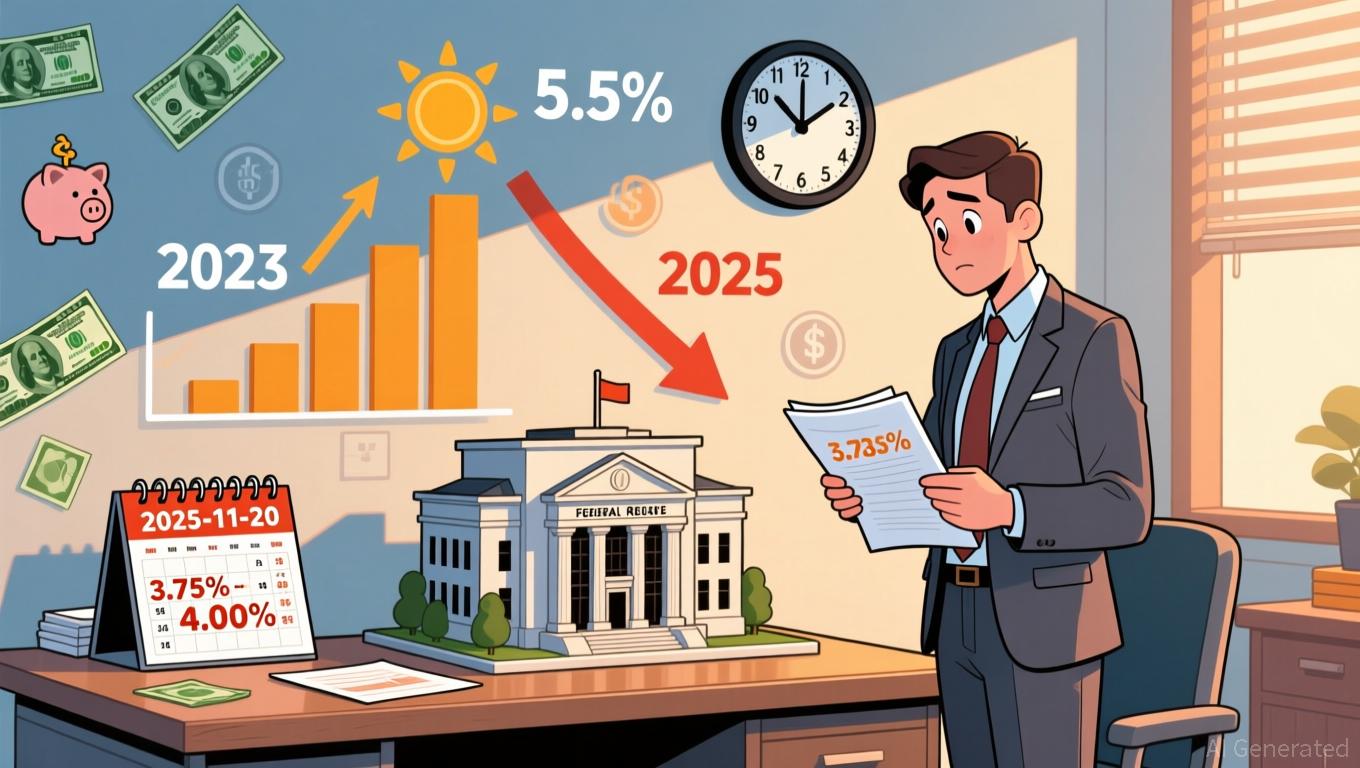Prediction Market Sector Splits into Liquidity Providers and Distribution Networks
- Robinhood and Coinbase expand prediction markets via CFTC-regulated platforms, targeting $300M+ annualized revenue for Robinhood by 2025. - Kalshi ($11B valuation) and Polymarket ($12–15B) compete with regulated vs. decentralized models, while Nevada court challenges threaten $650M contracts. - Sector fractures into liquidity platforms (Kalshi/Polymarket) and distribution channels (Robinhood/Coinbase), with $51.39B combined trading volume in 2025. - Regulatory alignment becomes critical as Polymarket par
The prediction market industry is experiencing swift changes as leading fintech companies such as
Kalshi, a platform regulated by the CFTC, recently secured $1 billion in funding at a valuation of $11 billion,
Coinbase is also making its entry, with leaked application code and images indicating it plans to launch a Kalshi-backed prediction market at its December 17 event. The new platform will enable users to trade binary contracts on a variety of events, from elections to crypto achievements, with results verified by reliable data providers
As regulatory loopholes close, compliance is becoming a key factor for success. Polymarket’s recent approval from the CFTC and its data partnership with Intercontinental Exchange
The prediction market ecosystem is dividing into liquidity providers (Kalshi, Polymarket) and distribution platforms (Robinhood, Coinbase). As Robinhood and Coinbase incorporate regulated systems, the industry’s expansion will depend on balancing regulatory compliance with innovation. Bernstein continues to rate Robinhood as “outperform,”
Disclaimer: The content of this article solely reflects the author's opinion and does not represent the platform in any capacity. This article is not intended to serve as a reference for making investment decisions.
You may also like
Post-peak CD returns threatened by Fed reductions—investors hurry to lock in rates
- CD rates peaked at 4.20% APY in late 2025 but declined as Fed rate cuts reduced federal funds to 3.75%-4.00%. - Short-term 12-month CDs remain competitive at 3.92% APY, outperforming longer-term products amid expected further Fed cuts. - Analysts urge investors to lock in current rates before December's anticipated third cut, as 2025's three reductions follow 2024's three cuts. - Strategic allocation to high-APY CDs maximizes returns, with $100k in 12-month terms generating $3920 vs. $3600 in 24-month te

Bitcoin News Update: Federal Reserve's Shift to Dovish Stance Sparks Digital Asset Rally Amid Supply Constraints, BTCM's Second Phase Poised to Capitalize
- Fed ends quantitative tightening, boosting markets as Bitcoin Munari (BTCM) enters $0.22 Phase 2 presale. - Dovish pivot with inflation below 2% drives risk-on sentiment, pushing December rate cut odds above 70%. - BTCM's fixed-supply model (21M tokens) and 2,627% projected return align with scarcity-driven crypto trends. - Structured presale pricing ($0.10→$0.22) and Solana's $58M daily ETF inflows highlight institutional adoption.

Bitcoin News Update: Report Reveals Bitcoin’s Future Depends on Macroeconomic Transparency and Trust from Institutions
- Bitcoin's 36% October drop sparks debate over recovery potential amid institutional sell-offs and ETF divestment risks. - Institutional holders (1,000+ BTC) reduced exposure by 1.5%, contrasting retail exits, mirroring 2019-2020 redistribution patterns. - Key support at $89,400-$82,400 and Fed rate cut odds (69.3%) highlight macroeconomic influence on Bitcoin's risk-on/risk-off dynamics. - Whale accumulation (100-10,000 BTC) contrasts retail selling, but 1,000-10,000 BTC cohort distribution remains a bea

The Growing Interest in Socially Responsible Investing (SRI) within Legal and Public Interest Fields
- SRI is shifting toward education and legal sectors to address systemic inequities, merging financial returns with social impact. - UC Berkeley's Public Interest Scholars Program funds law students for public service, ensuring measurable societal benefits through accountability frameworks. - Digital tools and ETFs like ESGU/VFTAX enhance SRI transparency, enabling investors to track real-time social impact in education and legal equity initiatives. - Institutional commitments to IDEAA principles and partn
